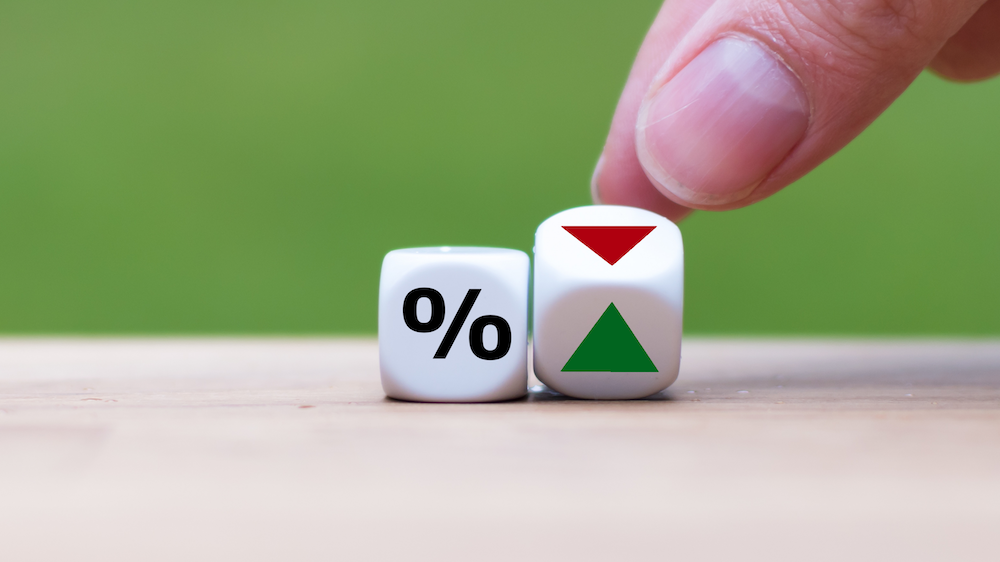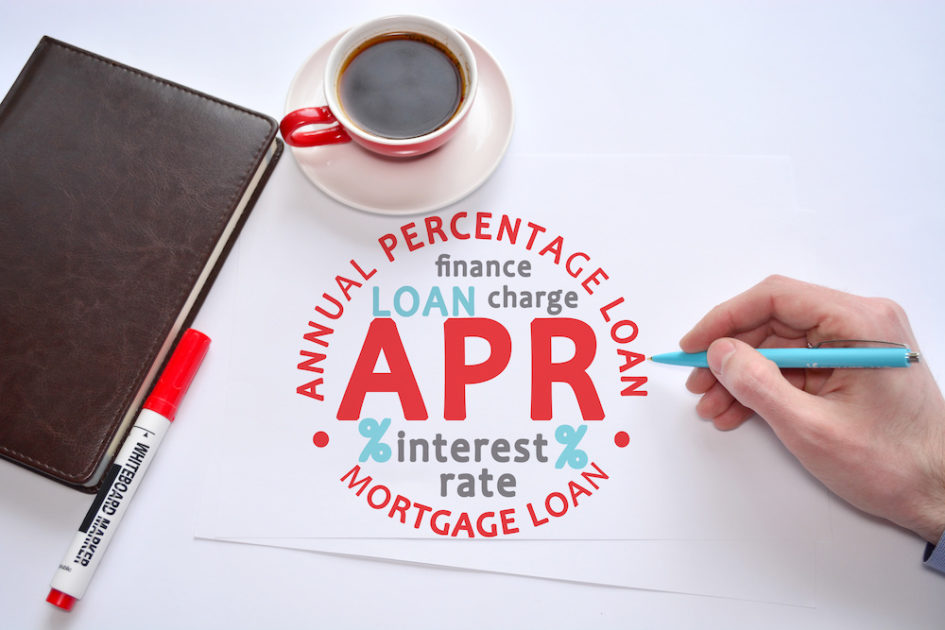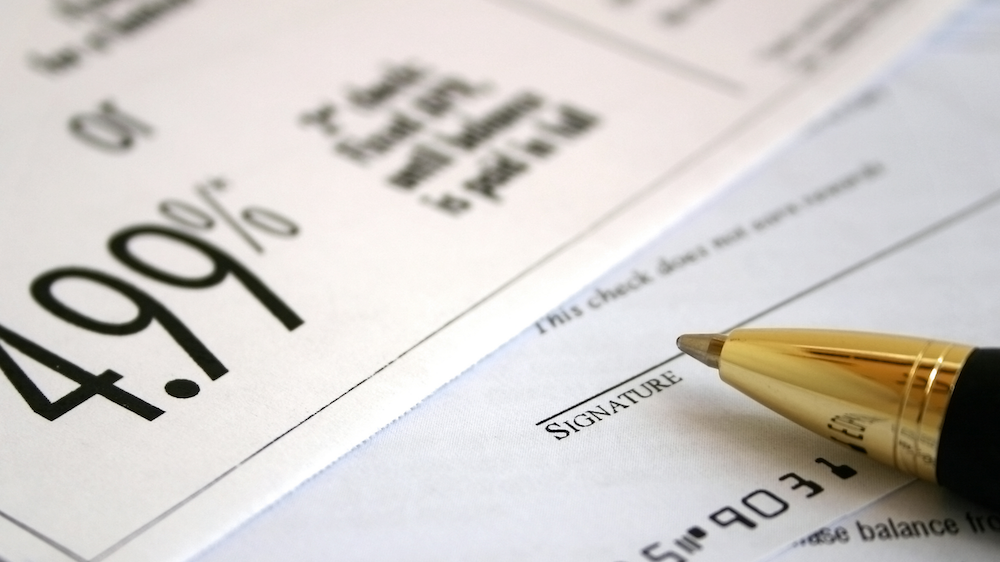
What Is APR: Understanding Annual Percentage Rate

Navigating the world of finance can be scary, especially if you aren’t familiar with the many terminologies being thrown around. You can easily get lost in the sea of words and acronyms, which could lead to you making uninformed financial decisions.
APR, or annual percentage rate, is one of these terms. It is often confused with interest rate, however, they are two very different metrics. Today we’re going to answer the question “what is APR” to make sure that you can use it to your advantage when shopping for a loan or taking on a credit card.
Definition of Annual Percentage Rate (APR)
Annual percentage rate (APR) is a financial term that refers to the total amount of money charged on a loan for an entire year. It takes into consideration all costs, fees, and payments involved in a loan. APR can conveniently provide you with a bird’s eye view about how much you’re actually going to have to spend per year when taking on credit. Simply put, it refers to the total cost of borrowing money.
APR is frequently encountered when taking out big loans like mortgages, but it can sometimes also be seen in smaller personal loans. Most credit card companies utilize APR when charging their users for monthly payments that have incurred interest.
How Does APR Work?
APR is determined by adding up all your total loan expenditures, dividing that by the total loan amount, and then dividing that by the number of days in a loan term. This will give you a figure (in percentage) that can easily tell you how much more you’re going to have to pay annually on top of paying back the principal amount. The APR calculated is usually equal to or higher than the nominal interest rate.
Getting the APR (the actual price) will then allow you to compare it to the interest rate of the loan (the given price). This shows you how much of a difference the extra fees will make in the total cost of a loan. Loan APRs can also be used to compare two different loan offers when shopping around for a lender since it gives you a more complete view of how much the loan will actually cost.
Most lending institutions will provide you with the annual percentage rate right from the beginning. In the US, the Truth In Lending Act (TILA) is a federal law that was created for the benefit of borrowers. It mandates lenders to provide you with all the loan cost information so that you can compare different loan offers from different institutions.

How To Calculate APR
Calculating the APR is pretty easy once you know how to do it. Here is a quick step-step-by-step guide on how to figure out the APR. We’ll be using an example to better illustrate the process.
Let’s say you’re going to take out a $30,000 loan with a 5% annual interest rate over 4 years. On top of this, you’re required to pay for a closing fee of $500 and an extra $300 dollars in miscellaneous administrative fees. Calculate the APR by following these steps.
Determine The Total Interest Accrued
First, figure out the total amount of interest you will have to pay. This can be done by plugging in your values into the formula A=[P(1+rt)], wherein P is the principal amount, r is the interest rate, and t is the time period.
This will give you A=[30,000(1+0.05x4))] which is equal to 36,000. Subtract 30,000 from 36,000 to get your total interest accrued over the life of the loan: $6,000.
Add All Costs
Next, add your total interest accrued to your expected fees. In this case, add $500 and $300 to $6,000. This will give you a total cost of $6,800.
Divide By The Loan Amount
You will then need to divide your total costs by the amount of money you’re taking out. In the example above, it would look like this: 6,800/30,000. This should give you a value of around 0.227.
Divide By The Number Of Days In Loan Term
Finally, you can divide the value you just got by the total number of days in the loan term. In this case, you should divide 0.227 by 1,460 days. Multiply this by 365 and then by 100 to give you the APR for one year: 5.6%.
The formula we used looks like this:
APR = [(((Fees + total interest)/loan amount)/number of days in term) x 365] x100
Keep in mind that this formula does not take compounded interest into consideration. It only shows you the percentage of the amount you’re actually going to spend on interest and other borrower-related payments per year. This isn’t the most comprehensive way to look at the price of a loan, but it’s a great way to compare loans at a glance.
The Types of APR
There are two basic types of purchase APR: fixed APRs and your variable APRs. Each type has its own pros and cons which should be considered when taking on a loan. Let’s take a look at the differences between the two.

Fixed APR
A fixed APR, like the name suggests, means that the APR should not change during the entire life of the loan. This type of APR should be set before the loan is even taken on. It is usually based on the index when the loan starts and it should stay constant throughout the entire tenure, even if the index goes up.
This means that a fixed APR scheme should make it much easier to budget your spending right from the get-go. Your total spending per year should be relatively more predictable than if you opted to go with a variable APR. The main downside is that you will not be able to take advantage of the periods when prime rates go down.
Variable APR
Variable APR is the opposite of fixed APR since it is tied to an index interest rate. This means that it has the potential to go up or down based on the current prime rate set by the market at any given time. If the prime rate index goes up, then the interest rate APR of your loan also goes up. Credit card companies often utilize variable APR.
A variable APR can be beneficial to you if you think the index is stable or in a decline. Variable APRs usually provide you with lower introductory APR rates upfront. The annual price of your loan can also go down with the index, saving you some money. However, the opposite is also true and your APR can also potentially go up. Take into account both the present and the future market situations when taking on a loan with variable purchase APR.
What Is The Difference Between APR And Interest Rate?
Annual percentage rate and interest rate are similar concepts, which is why many people often have them confused. They’re both percentage figures that can give you an idea about the cost of taking out a loan. One way to think about them is to realize that they’re two different ways of looking at the same thing.
The interest rate of a loan is determined by the borrower’s credit scores and the current market rates being offered. Having higher credit scores often means that you are entitled to lower interest rates (and vice versa). The amount of money you have to pay monthly is based on the interest rate and the principal amount, not APR.
On the other hand, the annual percentage rate is usually dependent on the lender since they set all the extra fees you’re going to have to pay. It’s a way to look at how much you’re going to spend over the course of an entire year for the loan. Hence, APR is a great way to get a big-picture estimate of your loan whereas interest rate is good for estimating your month-to-month costs.

Where Else Will You Encounter APR?
Throughout this article, we focused on purchase APR. This refers to the type of APR you usually see on loans that you take out to make purchases, such as when taking out a car loan or a mortgage. These types of APRs are relatively simple since you only have to focus on one figure throughout the whole loan.
However, this doesn’t mean that these are the only types of APRs you will encounter. Credit card companies also incorporate APR into their credit card system. These include purchase APR, balance transfer APR, cash advance APR, or penalty APR. You may encounter some of these if you have a revolving balance on your credit card.
Why Knowing The APR Is Important
Understanding the annual percentage rate and how it works will allow you to make more informed decisions when taking on debt. It can provide you with a quick overview of the total costs of borrowing money. The annual percentage rate can easily tell you if you can fit the loan into your budget, how much more you’re spending on extra fees, and how much the loan will cost compared to other loans.
If you have a credit card with a balance, APR can also help you understand how much monthly debt is added due to the accumulation of interest and/or penalties. You can easily track how much more you’re going to shell out so that you can budget your income accordingly. All in all, APR is a great metric for keeping track of the debt you incur.

Conclusion
APRs are great tools for understanding the cost of borrowing money. They are often forgotten or confused with interest rates, however, the two of them together will give you a much better idea about how much it will cost to take out a loan or credit card. This can help you both budget and plan your yearly expenses.
If any of this still confuses you, fret not! Wesley LLC can help you navigate through the often intimidating situation of managing debt. Contact us today to learn more about what we can do for you!